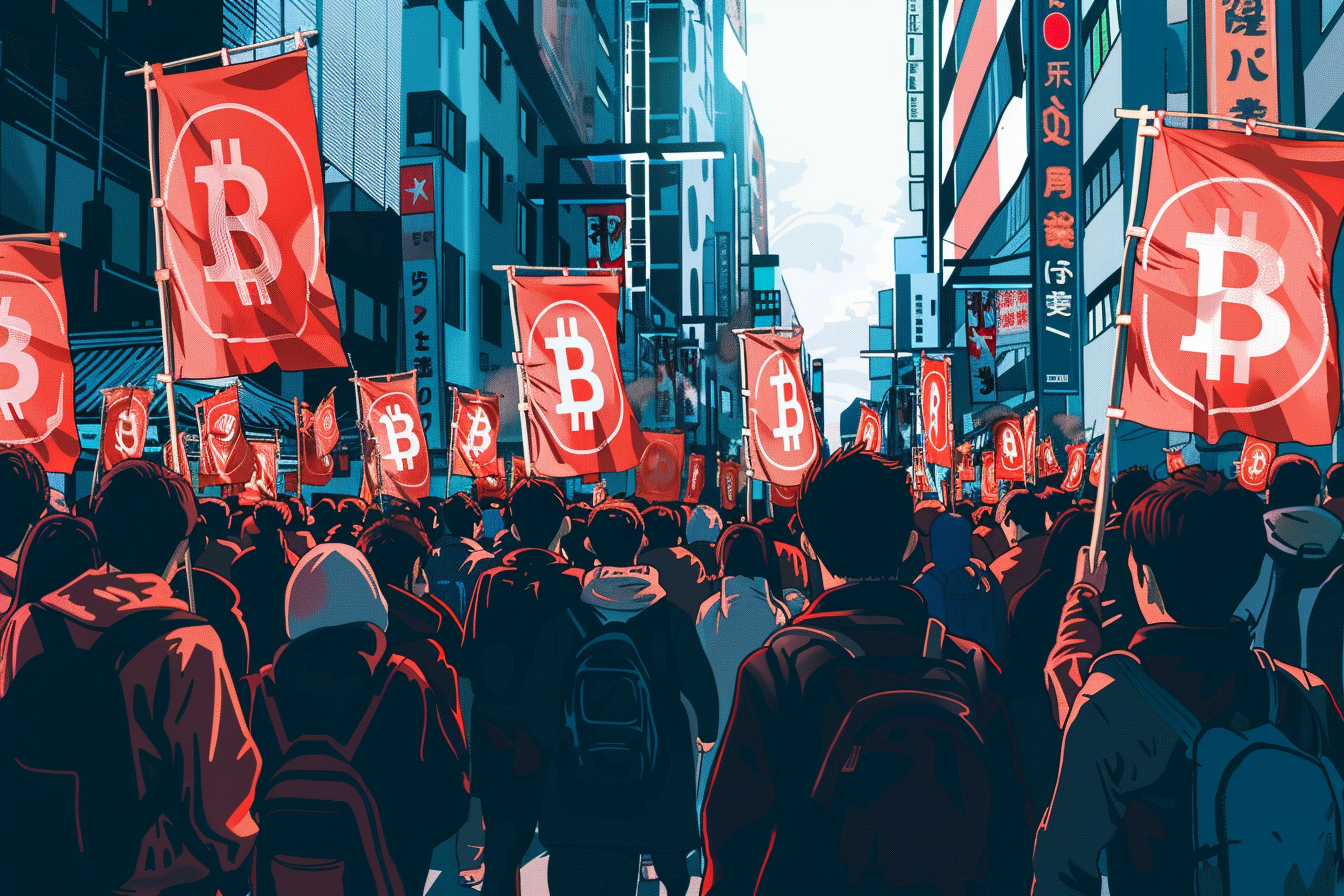Table of Contents
This column explores cryptocurrency markets from the perspective of a somewhat-grizzled trading veteran with a quantitative background and perhaps too much experience doing derivatives janitorial work. Finance is an old industry with a long history of everything from productive innovation to cartoonish fraud. Here we take a grand skeptical tour of a new corner of that world, with two tools that have consistently helped traders for millennia in our steamer trunk: math and knowledge of the past.
Stablecoins remain in the news following the Terra-UST-Luna mess. We talked about that a bit last week. But more generally, what is the point of stablecoins? These things represent fiat currency, most commonly US$1 each. But your bank doesn’t have a big pile of paper money in the basement. Of course, that is also all credits in computers. So what is different here? Is this about trust or fees or software or what?
Read more: A Mexican Standoff Inside the LUNAtic Asylum
Let’s review a few properties of stablecoins that we see in the wild and try to puzzle out why we need these by comparing them against traditional alternatives. For our purposes here we are going to assume the stablecoins we are talking about are 100% legitimate.
If the purpose is “financial alchemy” then fair enough – but that sort of weirdness isn’t our topic today. In the end we do find truly new things that stablecoins on decentralized blockchains enable. It comes with baggage of course, but hey its an actual innovation!
Censorship-resistant
The first and most commonly cited property of stablecoins on decentralized blockchains is that they are freely transferable and nobody can stop you buying what you want. This is surely different from traditional finance. Know your customer (KYC) and anti money laundering AML rules exist to allow tracking and blocking payments. Dropping that ability is different.
So OK, stablecoins are more censorship-resistant than bank money. But they aren’t totally censorship-resistant. We have evidence of everyone from Tether to Circle blocking accounts, though there is visibly less KYC/AML going on. Is this good? It this legal? Certainly it seems unlikely regulated stablecoins will manage to preserve this property.
Were the semi-anonymous numbered bank accounts of yesteryear a good thing?
Were the semi-anonymous numbered bank accounts of yesteryear a good thing? Should they return? Is that even legal? This one is not so much new as a blast from the past.
Lower transfer fees
Runner-up in the list of stablecoin features is cheap transfers. Now, in most of the world, local currency transfers are already free and instant. This is true in the United States, eurozone, Hong Kong, Singapore, Japan, Thailand, China and probably more currency regimes. This mode of transfer is more common in some places than others and seems to be used most heavily in Asia.
But it’s impossible to believe there is a fundamental problem with bank transfers within an economy running quickly. They aren’t that different from text messages. And, again, they are offered to most of the world’s GDP now.
One issue is that you clearly get less service. You cannot dispute a charge on a decentralized blockchain and you can’t reverse a transaction. Fixing mistakes means relying on the mercy of your counterparty. That’s not really the DeFi ethos, or a step forward, is it? As an opt-in method: great. As the default: not so much.
If the added protections of traditional payment services are not worth it, then the incentive to migrate is strong and people will do so. Plus the market should drive down the costs of these services in the face of increased competition.
“Use our service, it’s more dangerous but cheaper” does not have the same ring to it.
Here, the regulators have an essential role to play. “Use our service as it’s the same but cheaper” is a great marketing strategy.
But it’s not true here! And “use our service, it’s more dangerous but cheaper” does not have the same ring to it. These are hard regulatory problems and not just in the financial space.
Lower FX fees
Right, alongside cheap transfers are lower FX fees. Some DeFi automated market maker (AMM) may give you better pricing for foreign exchange than your bank. And high street banks are notorious for giving terrible FX pricing, with a long history of scandals. But commercial interbank FX costs nothing – spreads for major currencies are routinely 0.01%, such that for retail amounts the cost is nil. Again this feels like an incentive/regulatory problem or an issue pricing the error-correction feature.
Another reason, plainly, is that many people with less money are probably getting screwed by their bank. Professional traders and higher-tier bank clients get better FX rates and don’t pay these sorts of fees. How much of this is incumbency vis-a-vis genuine costs? Who knows. But the ascent of TransferWise and coincident reductions in bank fees makes clear there is a lot of fat that can be cut within the traditional system.
This problem is depressing not so much for moral reasons but because it’s so easy to fix.
This problem is depressing not so much for moral reasons but because it’s so easy to fix. Banking regulators can simply fix this by mandating access to services and limiting fee gouging. And consumers should take a stand too.
In Singapore, it is a common everyday thing to use free account-to-account transfers for retail purchases. If you want to use a credit card they charge you more – so most of the time you don’t. Why is this not common in the West? The service exists. If the bank won’t give it to you that is a regulatory failure not a technology one. There is actually nothing new here. Rather it is the age-old problem that the traditional financial system should be brought to heel on fees.
Offshore accounts
This is the big one and it’s actually new. Many people live in countries where access to foreign currency bank accounts is difficult or impossible. Stablecoins allow these people, often for the first time, access to something like a USD bank account.
First it’s important to say: under some reasonable interpretations of laws this service is illegal. Or will be made illegal. If the government doesn’t want you having a foreign bank account it probably doesn’t want you having a stablecoin wallet. That’s not a defense – it’s the statement that governments make and enforce laws.
Read more: All Eyes on Lawmakers as US Set to Regulate Stablecoins
But this is a new thing. The USSR effectively banned holding foreign currency – but the West would accept defectors and give them bank accounts on demand. Here, that can happen on an industrial scale where people need not even physically travel overseas.
Stablecoins on decentralized blockchains allow both dissidents who cannot travel and poor rural villagers to hold something approximating foreign assets just by having an internet connection.
Stablecoins on decentralized blockchains allow both dissidents who cannot travel and poor rural villagers to hold something approximating foreign assets just by having an internet connection. That’s new. It may be the only truly new thing enabled by stablecoins. And it’s also pretty obviously illegal for many of the most important use cases.
This is difficult.
Once a defector defects you can protect them. Here we are talking about foreign parties working with locals to perform actions which are illegal for those locals but without any way to protect them from the local authorities. That is a hard moral problem that we are only starting to recognize today and have yet to meaningfully come to grips with.
So?
There is something new here after all. There is a way to transact, in offshore assets, with people that otherwise would not have access to them. This may well be illegal for those people (or not, there are many countries and systems). But it is new and it raises new ethical and moral questions.
Read more: DeFi Yield Farms Are Just Used Car Dealers
Also, its got a lot of side-effects. For one, this presupposes the existence of a system that is also good for no-KYC transfers and money laundering. It’s also a system where errors may be impossible to correct and some forms of fraud – think of any time you needed a refund – may be impossible to stop.
Is it worth the tradeoff? Who knows. But at least it’s time to start asking the questions.









